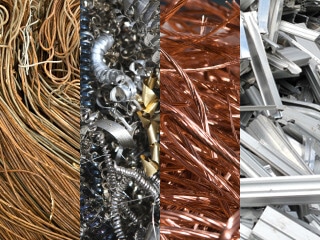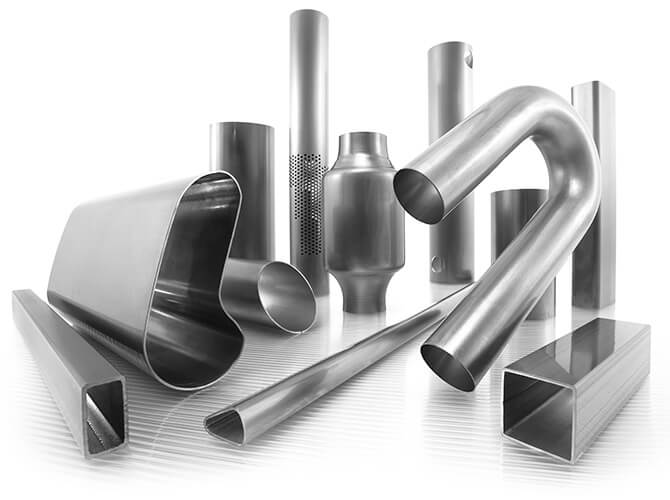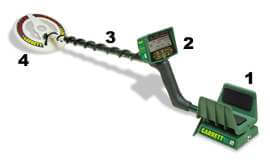Do Metal Detectors Detect Aluminum?

Yes, metal detectors do detect aluminum. That's the short answer, but it's so much cooler than that so read on!
As with any metal, other factors come into play. Obviously, the type of metal is important, but the size, orientation, shape, and soil conditions can all effect the ability of a metal detector to detect aluminum. Add to this that the aluminum may not be pure and the fact that different metal detectors use different frequencies and pretty soon the answer becomes ‘maybe'.
Understanding the Types of Metals
Metal detectors "see" different metals very differently from one another. Even the same metal with different impurities, or an alloy of the metal, may result in a wildly different signal than if the material was pure.
So first, we must understand the various types of metal, such as ferrous, non-ferrous, aluminum, or stainless steel.
Ferrous Metal

Ferrous metal contains iron and this type of metal can be attracted to a magnet or magnetic objects. Iron and steel are ferrous metals and are both attracted to a magnet readily.
In the open air, these types of metals may rust due to the iron being exposed to air and water. The ferrous metal is easily detectable with a metal detector.
Non-ferrous Metal

Non-ferrous metal does not contain iron, and this classification covers a wide range of metals including copper, aluminum, zinc, lead, nickel, and titanium.
These metals have no attraction to a magnet. Logic could lead someone to think that the electromagnetic field from a metal detector would just pass straight through non-ferrous metals. After all, it has no magnetic properties. However, most nonferrous metals are good conductors. Some of them, like gold, aluminum, and copper are extremely good conductors.
Conductivity, rather than magnetic properties, determines whether an object can be detected by a metal detector or not. For this reason, because aluminum is a very good conductor, it can be detected by a metal detector quite easily.
Stainless Steel

Stainless steel is interesting. Although it always looks like shiny new steel, its properties are very different. Very high grade stainless steel has almost no reactivity to a magnetic field. Enough so that a good method of testing the quality of a stainless steel product is to put a magnet against it. If the magnet sticks, it is likely low quality stainless steel and will rust at some point in the future.
In addition, stainless generally has low electrical conductivity, making it one of the most difficult metals to find with a metal detector.
What is Aluminum?
Aluminum is an element, though it is used in many alloys. Being light, strong, high conductive, and cheap, it can be found in many household and industrial products like utensils, can, foils, airplanes, rockets and much more.
What is the Electric Conductivity through Aluminum?
We know that metal detectors locate metallic objects by producing electromagnetic fields and that this field is disturbed by electrically conductive metals or metallic objects. So, for aluminum, it's conductivity is directly related to how easy it will be to detect. Let's see the following table of metals and their electric conductivity.
Table of Metals and Their Electrical Conductivity
Name of Metal | Conductivity |
|---|---|
| Pure Silver | 6.30×107 |
| Copper | 5.96×107 |
| Pure gold | 4.11×107 |
| Aluminum | 3.77×107 |
| Zinc | 1.69×107 |
| Nickel | 1.43×107 |
| Pure iron | 1×107 |
| Platinum | 9.43×107 |
We can see the electrical conductivity of aluminum is pretty good. So, we can easily detect aluminum with a metal detector.
How Does a Metal Detector Detect Aluminum?

We will discuss the 2 most important parts of a metal detector to understand the components at work. Even the cheapest metal detectors have a range of functions in addition to what we will be discussing here, but this will provide you with sufficient background knowledge.
Search Coil
Search coil is a very important part of a metal detector. It has two parts, the transmitter coil and the receiver coil. When a metal detector is being used, electricity flows through the transmitter coil and a signal is sent out on the metal detectors operating frequency. Instantly, a magnetic field is created all around the metal detector, and this field penetrates the surrounding area. In an airport, this field will harmlessly penetrate the body. When treasure hunting, this electromagnetic field penetrates the ground from several inches to 3 feet in depth.
The user need to sweep the search coil back and forth across the area being searched to ensure that any hidden metal disrupts the electromagnetic field enough to be detected. When the field is disrupted by a metal object, the metal detector's receiver coil receives a signal that has been bounced back. If the signal is strong enough, it passes to the control box.
Control Box
The control box contains the electronics that are the brains of the metal detector. It is the job of the control box to determine if the signal is strong enough, or if it is likely to have been from the right type of metal, to justify alerting the user.
If the control box determines, through the settings it has been given, that the signal should result in the user being notified then it makes an audible sound and, in many cases, displays information about the signal on an LCD screen.
Conclusion
Now that you know that aluminum can be detected by a metal detector, and you know the science behind it, you should be more efficient in finding all types of metal. Just remember to set your metal detector to “All Metal Mode” when attempting to detect aluminum.





